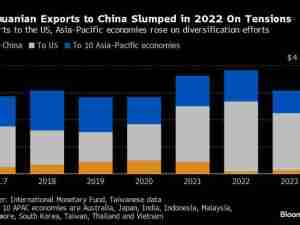Growth in U.S. manufacturing cooled by more than expected in July as a gauge of new orders fell to the lowest in more than a year, amid persistent concerns over the fallout from a trade war, data from the Institute for Supply Management showed Wednesday.
Key Takeaways
ISM survey respondents were “overwhelmingly concerned” about how tariffs and retaliatory actions will affect their business, survey chair Timothy Fiore said in a statement. Disruptions on steel and aluminum, as well as transportation difficulties, are continuing, the group said.
Even with a step down in output and orders, the July index was higher than the 57.4 average for all of 2017 and is still consistent with expansion in manufacturing at the start of the second half following a quarter with the fastest pace of economic growth since 2014.
The ISM results were weighed down by declines in several gauges that indicate an easing of capacity constraints on American factories. Delivery times quickened a bit, while the purchasing managers group’s measure of order backlogs declined by the most since 2015. That may help explain some of the cooling in prices paid, though the gauge remains elevated.
In prior months, supply issues in part may have reflected producers’ rush to buy materials ahead of President Donald Trump’s planned tariffs on products from China and levies on steel and aluminum from around the world. The industry faces the risk that trade tensions may persist and erode business confidence, even though lower taxes are providing a boost.
The latest ISM data suggest that factory production may stay resilient for now. While a gauge of manufacturers’ stockpiles rose to a four-month high, an index of customer inventories in July dropped to a more than seven-year low.
Other Details
- 17 of 18 industries reported growth in July; the only exception was primary metals
- Index of backlogs fell to 54.7, the weakest since November, from 60.1
- Supplier delivery gauge decreased to 62.1 from 14-year high of 68.2 in June; 6.1-point drop was largest since 1988
- Measure of customer inventories slipped to 39.4, lowest since December 2010, from 37.7
- Export orders measure dropped to 55.3, lowest since October, from 56.3





